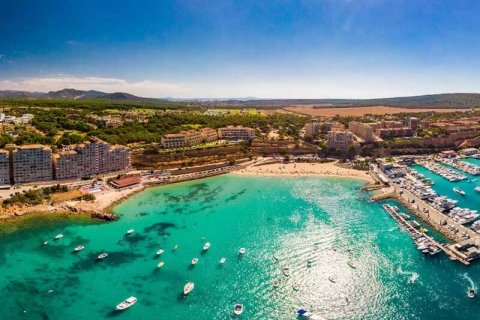
The situation with global inflation continues to affect the purchasing power of the Spanish population. Particular attention should be paid to the households of the Balearic Islands, one of the most expensive regions of the country. According to recent data, local households need to spend 31.8% of their total income to ensure that they can buy a home.
Prices for the residential real estate of the archipelago itself at the end of the third quarter of 2022 were 23.5% higher than their figures a year earlier. In 2021, households were forced to spend 20.1% of their income. However, the situation is no easier in other regions of Spain.
According to the Idealista real estate portal, one of the most difficult regions is the province of Gipuzkoa in Baskonia, where it is necessary to spend 39.1% of total income to finance the purchase of housing. It is followed by Barcelona (35.6%), Madrid (34.5%) and Vizcaya (33.8%).
More than 25% will be required in such areas of the country as Girona (26.9%), Las Palmas (26.7%), Malaga (26.3%), Alava (26.3%) and Santa Cruz de Tenerife (25.7%). At the same time, the least financial efforts are experienced by households in Cuenca (12%), Teruel (12.3%), Lugo (13.5%), Ciudad Real (13.5%), Jaen (13.6%) and Toledo (13.7%).
Madrid — the highest growth in the country
The province of Madrid is one of the most expensive places in Spain for property buyers. From the third quarter of 2021 to the same period of 2022, the share of spending on household income for the purchase of residential real estate increased in Madrid from 27.2% to 34.5%. This is indicated by the data of September sales prices of such objects in the region, as well as statistics on household incomes.
In terms of growth rates, Barcelona (from 29.4% to 35.6%), the Balearic Islands (from 26% to 31.8%), Gipuzkoa (from 34% to 39.1%) and Vizcaya (from 29% to 33.8%) are not far from Madrid. The smallest annual growth is observed in the provinces of Zamora (from 13.4% to 14.2%), Lugo (from 12.6% to 13.5%) and Cuenca (from 11% to 12%).
Growth dynamics of provincial capitals
So far, only four provincial capitals of Spain require spending more than a third of their income to finance the purchase of residential real estate. Barcelona takes the first place with 49.7%. At a distance from it are San Sebastian (46.8%), Madrid (41.3%) and Bilbao (37.3%). The least among the capital cities will be required from residents of Avila (16%), Zamora (16.1%), Jaena (16.2%), Lugo (16.3%), Caceres (16.6%), Teruel (17.1%) and Ciudad Real (17.1%).
It is worth pointing out the growth of household incomes in cities over the same period. The first place in terms of growth is again occupied by Barcelona — from 35.4% to 49.7%. It is followed by:
- Madrid (from 32.5% to 41.3%);
- San Sebastian (from 38.7% to 46.8%);
- Palm tree (from 26.3% to 33.3%);
- Cadiz (from 25.8% to 31.9%);
- Bilbao (from 31.5% to 37.3%);
- Malaga (from 22.6% to 27.8%);
- Valencia (from 21% to 26%);
- Seville (from 21.5% to 26.1%).
